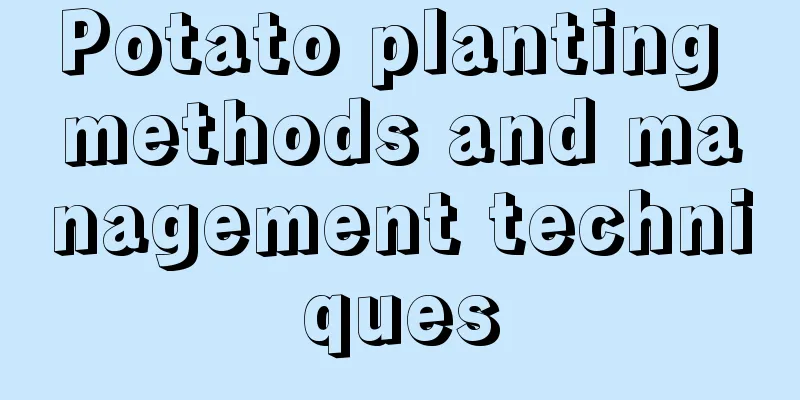Potato planting methods and management techniques

|
As an easy-to-grow and high-yield crop, potatoes are favored by farmers from all over the north and south. Not only are they easy to store, but they can be grown twice a year in most areas, once in the spring and once in the fall, except in some extremely cold regions where they may be limited to just one crop a year. Although potatoes are relatively simple to grow and care for, there are some key planting and management tips to follow in order to achieve high yields and large root tubers. Let’s learn about potato planting methods and management techniques. 1. Soil preparation and fertilization Choose flat, deep and fertile sandy loam land, and carry out land preparation after the previous crop is harvested. Before planting, a balanced fertilization strategy was adopted, applying 200 kg of wood ash, 60 kg of ammonium bicarbonate and 1,500 to 2,500 kg of farmyard manure per 667 square meters to ensure balanced soil nutrients. 2. Seed selection and processing Select high-quality virus-free potatoes that are undamaged, free of pests and diseases, and have smooth skin as seed potatoes, such as Kexin No. 1 and other varieties. Use a sterilized knife to cut the potato into pieces. Each piece should weigh 35 to 50 grams and have 1 to 2 healthy eyes. After cutting, mix talcum powder and thiophanate methyl in proportion to promote wound healing. 3. Germination of Seed Potatoes After the seed potatoes are spread out to cool, they are soaked in a solution of appropriate concentration of humic acid, then placed in a moist sand bed and covered with a film to promote germination, break the dormancy period, and ensure uniform emergence. 4. Planting seeds Sowing should be carried out when the average daily temperature reaches 15 to 25°C and the soil temperature is stable at above 10°C. The planting density is determined reasonably based on soil fertility and variety characteristics. Generally, 6,000 plants are planted per mu or 120 to 150 kilograms of seed potatoes are used. 5. Water management After sowing, irrigate in time when it is dry to keep the soil moist, especially during critical growth periods, such as plant emergence, bud formation and flowering period, to ensure adequate water supply . 6. Pest and disease control During the growth period of potatoes, pay attention to the prevention and control of ground pests such as aphids and cabbage loopers, as well as underground pests such as cutworms and wireworms, and take appropriate chemical or biological control measures. 7. Harvest When the potato stems and leaves turn yellow and begin to wilt, indicating that the potatoes are ripe, choose a sunny day when the soil is dry to harvest to reduce the risk of disease and rot. The above is the planting method and management technique of potatoes. Although potatoes are a crop with relatively high yield, they also require us to do a good job of daily management.
|
<<: Honeysuckle planting, maintenance and precautions
>>: Key points of chive planting technology and management
Recommend
Where are cherry trees suitable for planting and growing conditions?
Cherry Blossom Tree Planting Area Cherry trees ca...
Winter care methods for clematis
temperature The most suitable temperature for Cle...
How to plant black rice
Planting method Seedling cultivation First of all...
How to propagate the beauty plum
Cutting method of beauty plum Cutting method is t...
Which month is suitable for planting onions?
When to plant onions Onions are generally suitabl...
How to grow Clivia and what are the precautions
1. Soil 1. Soil is the most important part of pla...
The propagation method of variegated reed
1. Rhizome cutting propagation: 1. The first thin...
Can I plant a grapefruit tree in front of my door?
Can I plant a grapefruit tree in front of my door...
How to grow banana and what to pay attention to
1. Maintenance methods 1. Temperature: The most s...
How does the yellow flower bloom?
Explosion method The method of blooming the pot -...
How to grow konjac to achieve high yield?
Konjac can be processed into konjac tofu , konjac...
Cultivation methods and precautions of fragrant lily
soil Lilies prefer deep and fertile soil. Remembe...
How often should mint be watered in summer?
Mint watering frequency in summer Mint likes wate...
Feng Shui plants to improve children's grades
1. Asparagus fern Asparagus fern can be placed in...
Can Bauhinia survive the winter in the north? What are the measures to survive the winter?
1. Can you survive the winter in the north? Bauhi...









